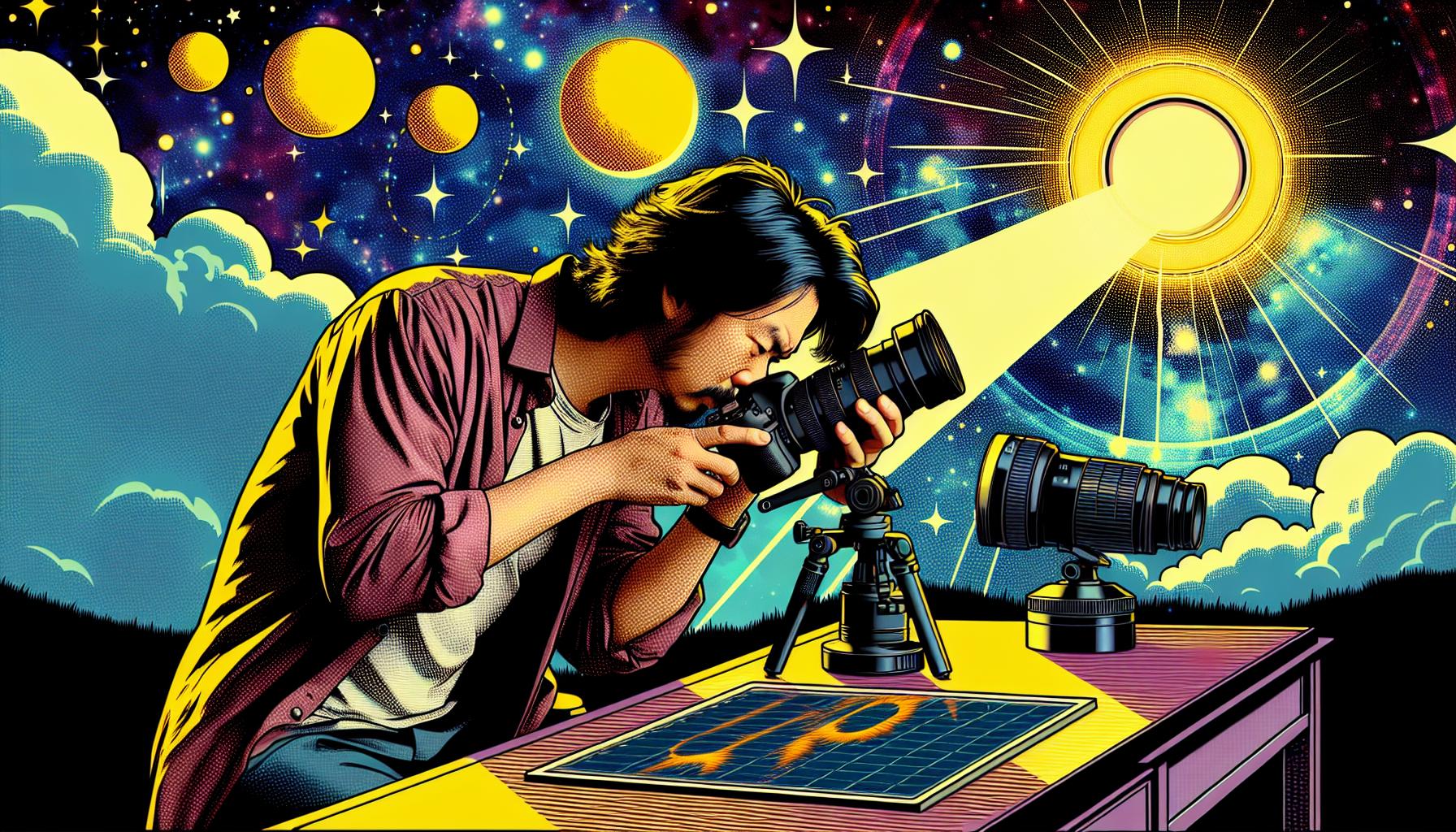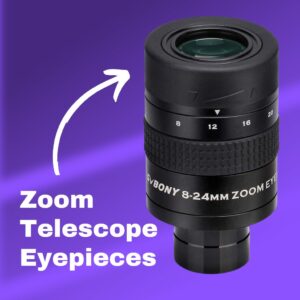This site contains affiliate links to products. I may receive a commission for purchases made through these links.
Astrophotography is a captivating field that’s all about capturing the beauty of the universe. One technique that’s often overlooked by beginners is flats astrophotography. It’s a vital part of the imaging process that helps to create stunning, high-quality photos of the night sky.
Flats astrophotography might sound complicated, but I’m here to tell you it’s not as daunting as it seems. This technique helps to correct imperfections in your images, such as vignetting and dust spots. So, whether you’re a seasoned astrophotographer or just starting out, mastering flats is a game-changer.
In this article, I’ll provide a step-by-step guide on how to take flats in astrophotography. I’ll demystify the process, making it easy for anyone to follow. So, let’s dive in and start capturing the stars like never before.
What are flats in astrophotography?
As we dive deeper into the specifics of how to take flats in astrophotography, it’s crucial to first understand what “flats” actually are. In essence, flats or flat frames play a critical role in the pre-processing of astrophotography images, serving as an essential tool for any astrophotographer aiming to capture the best possible shots of the night sky.
Flats are exposure techniques used to correct imperfections in images. These imperfections include vignetting (a common issue where the brightness reduces towards the image edges), and dust spots. They’re not pictures of stars or celestial bodies but of an evenly illuminated field, resembling a kind of blank canvas.
To understand why we need flats, picture this scenario: You’ve spent a whole night under the stars, capturing photos. You’re thrilled with the initial results and sure enough, when you get back and start to process these images, you find unwanted shadows, strange brightness levels, and the bane of any astrophotographer’s life, dust spots.
That’s where flats come into play! Providing a map of these anomalies helps correct these discrepancies, thus enhancing the quality of your final astrophotograph. Without flat frames, your images are likely to be marred by these errors, detracting from their overall impact and beauty.
Armed with this understanding of what flats are in the field of astrophotography, we’re set to delve into the process of capturing them accurately. This knowledge base is a solid starting point to master this beneficial technique, which is bound to elevate your astrophotographic journey.
Equipment needed for taking flats
Now that we’ve understood the importance of flats in astrophotography and how they can substantially improve your final images, let’s delve deeper into the topic and explore the essential equipment required for capturing flats.
The first component you’ll need is a lightbox. Many amateur astronomers construct their own DIY lightbox, but there are plenty of affordable commercial options available too. A lightbox is a uniformly illuminated panel that provides consistent and balanced light to your telescope, ideal for creating flat frames.
Next up is a luminance filter. If you’re using a monochrome camera with filters, I can’t stress enough the importance of a good quality luminance filter. It’s key to capturing great flats. The luminance filter allows you to capture the maximum amount of signal with the least amount of noise.
Additionally, you’ll need flat-cap or an electroluminescent panel. These are devices that provide an even light source directly onto your camera or scope. They take up less space than a lightbox and are easily portable.
Let me introduce you to a game-changing piece of equipment called the electronic shutter. It fits right into your camera and can drastically improve the quality of your flat frames.
Finally, to control the whole process, a software system is desirable. Multiple software options are available that can automate and streamline the process of capturing flats. They can regulate exposure lengths and determine suitable brightness levels, among other things.
Here’s a summary of the discussed equipment:
| Equipment | Use |
|---|---|
| Lightbox | Provides consistent and balanced light. |
| Luminance filter | Maximizes signal and reduces noise. |
| Flat-cap | Offers an even light source directly onto your camera or scope. |
| Electronic shutter | Improves the quality of flat frames by optimizing exposure. |
| Software system | Automates and streamlines the process of capturing flats; controls exposure lengths and brightness. |
With these tools in your kit, you’re well-equipped to start capturing accurate flat frames. In the next section, I’ll guide you through the process step by step.
Step 1: Setting up your camera and telescope
Now that you’re familiar with the essentials of capturing flats in astrophotography, let’s dive into the initial step of the process: setting up your camera and telescope.
Initially, you’ll need to set up your telescope as you would for regular astrophotography sessions. The location and the sky conditions aren’t as critical for flat fields as they are for other types of astrophotography. Regardless, ensure that your telescope is stable and securely mounted.
Pairing your camera with your telescope is the next crucial step. Besides choosing a suitable camera (a DSLR, mirrorless, or astro camera), ensure it’s properly connected to your telescope. The key here is to adjust settings so the camera sensor can evenly capture the light projected by your light source when capturing your flats.
Remember, the choice of the light source depends on the type of flat you’re capturing. But irrespective of the light source, the idea remains the same – to uniformly light up your camera sensor. To do this, your camera needs to be set up in a way that it can capture wide, even fields of light.
Next up, you’ll need to focus your telescope. While focusing on flats, you can use a standard focusing method that you would use for taking regular astrophotography images. Precise focus is essential to achieve results that can correct your images effectively.
Lastly, the camera settings play a pivotal role during the process. The capture settings for flats can vary based on the type of camera, type of light source, and even the type of telescope. However, one rule remains universal: get a good histogram balance. You want your image histogram to peak around a third of the way from the left side of your graph.
In the following section, we’ll discuss crafting the perfect light setup for your flat field imaging, an essential aspect of carving your path to perfect astrophotography images. Notably, this stage requires careful adjustments and fine-tuning, so stay tuned to discover how to ace it.
Step 2: Capturing flats images
Moving onwards from the initial setup, it’s now time to start capturing your flats. There’s an art to this that takes some skill and patience – two qualities that any astrophotographer worth their salt should have in abundance.
One thing that’s essential with flats is having just the right amount of light. The aim is to create an image that’s neither overexposed nor underexposed. The histogram should ideally show a Gaussian curve, peaking near the middle of the graph. That’s the sweet spot, where your images will have the maximum possible detail.
Let’s not pretend this is a walk in the park. Achieving the correct level of light can be quite challenging. However, with a carefully chosen light source and diligent adjustments, it’s feasible. I often recommend natural light as the easiest and most effective light source. You can simply point your telescope towards an evenly lit, clear morning or evening sky. But remember to avoid direct sunlight, as it can damage your camera sensor.
Shooting flats is not about capturing single images, instead, astrophotographers prefer taking multiple flat frames. It’s always better to take more than what you think you might need. In my experience, somewhere between 15 to 25 flats typically produce a creative master flat.
Take note of the exposure time for each captured flat. It’s usually short, around one to two seconds, depending on your camera settings and the light conditions. It’s important to maintain consistency in the exposure times so that you don’t end up with different brightness levels among your flat frames.
In the forthcoming section, we’ll get into the specifics of crafting that perfect light setup for flat-field imaging. So, it’s time to ready your setup and dive into the minutiae of astrophotography.
Step 3: Processing flats images
Once you’ve got a nice batch of flats with a well-controlled light source and consistency in your exposure times, it’s now time to jump into the third step: processing those images.
Flats processing is a critical stage in your astrophotography journey. It’s here where you’ll see the impact of your careful planning and meticulously clicked flat images. So let’s dive deep and discover how to effectively process flat images.
First, it’s important to use a reliable astro-image processing software. There are multiple user-friendly software options available like PixInsight, Astro Pixel Processor (APP), and DeepSkyStacker. These will help you get the best results out of your flat frames.
When it comes to adjusting your flat images in the processing software of choice, the key is balance. Balancing the light in your images is vital. You want to be careful not to over-adjust as it could render your flat images useless. Always remember, flat frames should help reduce noise and correct imperfections, not create more.
All you need to do is load your images into the software, apply the right adjustments, and watch as your images transform to near perfection. It’s an exciting process to see as all your efforts start to blossom in this stage.
Keep in mind, you might need a few trials and tweaks with the settings to get the hang of it. That’s perfectly okay.
No one becomes a pro at flat-field imaging overnight. It takes time, patience, and persistence. But with the correct approach and tools, you’re well on your way to becoming an expert astrophotographer.
I hope this has helped amplify your understanding of how to process flats images. But remember, this is just one piece of the puzzle. We have more coming your way in the following section, where we’ll discuss how to master the art of taking dark frames in astrophotography.
Step 4: Applying flats to your astrophotos
Now we’re heading into the exciting territory of actually applying the flats to your astrophotos. This stage is crucial as it sharpens the results, making all the previous steps worth it.
Your premium astro-image processing software will come in handy once again here. Most leading software has dedicated tools or features for applying flats. Calibration of your astrophotos with the flat frames is essential for the subtraction of uneven field illumination and sensor artifacts.
Let’s go through the basic steps together:
- Start by opening your image processing software and importing your light frames along with the flat frames.
- Locate and use the calibration feature in your software. Here, select your light frames and flat frames.
- After calibration, save the new, corrected frames.
This process will remove any unwanted artificial light gradient from your telescope optics by impressively balancing it with the light captured in your flat frame.
It’s not uncommon for beginners to stumble at this stage, especially when they’re dealing with advanced software. Don’t get disheartened if your initial outcomes don’t meet your expectations. Remember, trial and error is the part of learning. It’s important to practice and figure out how your particular software works. With time, you’ll develop an understanding of how to balance things to achieve desirable results.
Moving along on our path, the next task that we’ll cover is an essential player in the game of astrophotography – taking dark frames. They will aid us in eliminating the noise and hot pixels from our final image. Let’s move forward and learn more about it.
Tips and tricks for flats astrophotography
You’ve learned the basics of flats and how important they are in the process of astrophotography. But, let’s talk about some often overlooked tips and tricks that can help to improve your flats and ultimately, your final image.
Utilize your histogram
During the creation of flats, it’s crucial to check the histogram on your camera or in your capture software. Your goal is to aim for a peak in the middle of the histogram. This position signifies the best balance between shadow highlights and mid-tones. Take multiple flats and keep tweaking the exposure time until you get it right.
Consistent light source
Using a consistent light source is key. One popular option is an electroluminescent panel. It creates a flat, even light across the sensor, resulting in accurate flats. However, using a white T-shirt over the opening of your telescope and shining a light through it is an economical and equally effective strategy.
Shoot multiple frames
One single flat will not be sufficient. Shoot multiple frames and stack them during the editing process. Stacking multiple flats will minimize noise and better illuminate the image imperfections you’re trying to correct.
Accelerate the process with batch editing
Many excellent tools are available for batch processing multiple images, such as Astro Pixel Processor or PixInsight. These tools streamline the workflow, significantly reducing the time spent processing flats.
Remember, the calibration feature in your astro-processing software should be your best friend when it comes to flats. Make it work to your advantage. This perfect grip on the process doesn’t happen overnight. Monitor your images carefully, tweak the exposure times, and aim for an optimal position on the histogram.
Conclusion
So there you have it. I’ve shared my best practices for flats astrophotography. Remember, it’s all about fine-tuning your process. Keep an eye on that histogram and make sure you’re striking the right balance.
Consistency is key when it comes to your light source. Shoot multiple frames and use those batch editing tools to your advantage. Don’t forget about the calibration feature in your astro-processing software – it’s there to help you. Keep monitoring your images and tweaking as necessary. It’s a journey of discovery and with patience, you’ll capture the stunning astrophotography images you’re aiming for. Happy shooting!
Join other astronomy enthusiasts by subscribing to our newsletter. Dive into a world of fascinating celestial events, in-depth space analysis, and special offers tailored just for you. Become part of our cosmic community today!




